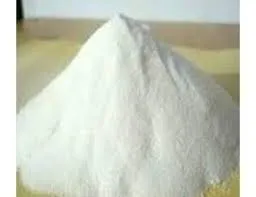
നവം . 17, 2024 03:31 Back to list
hpmc dispersion
Understanding HPMC Dispersion Applications and Benefits
Hydroxypropyl Methylcellulose (HPMC) is a cellulose derivative widely recognized for its diverse applications in various industries. Its unique properties make it an indispensable ingredient in several formulations, most notably in pharmaceutical, food, and cosmetic products. In this article, we will delve into HPMC dispersion, exploring its characteristics, applications, benefits, and how it revolutionizes product development across different sectors.
What is HPMC?
HPMC is a non-ionic, water-soluble cellulose ether. Its structural versatility results from the substitution of hydroxyl groups in cellulose with hydroxypropyl and methyl groups, leading to enhanced solubility and improved performance in different environments. HPMC exhibits a range of viscosities, allowing formulators to tailor its properties according to their specific requirements. Its ability to create stable dispersions makes it particularly valuable in various applications.
The Science Behind HPMC Dispersion
Dispersion refers to the process of distributing fine particles uniformly throughout a liquid medium. HPMC serves as an excellent stabilizer for suspensions due to its rheological properties. When HPMC is dissolved in water, it forms a gel-like network that can encapsulate solid particles, preventing them from settling or agglomerating. This characteristic is essential in the formulation of products requiring a uniform distribution, thereby enhancing their effectiveness and shelf life.
Applications of HPMC Dispersion
1. Pharmaceutical Industry HPMC is extensively used in the pharmaceutical realm, particularly in the development of oral solid dosage forms. It functions as a binder in tablets and capsules, helping to maintain the integrity and consistency of formulations. Moreover, HPMC acts as a controlled-release agent, allowing for a gradual release of active ingredients, which improves therapeutic outcomes. Its biocompatibility and non-toxic nature make it a preferred choice for drug delivery systems and coatings.
2. Food Industry In food formulations, HPMC is often utilized as a thickening and stabilizing agent. It improves the texture and mouthfeel of products such as sauces, dressings, and dairy products. Additionally, HPMC can replace fat in reduced-calorie products, contributing to the health-conscious market trend. Its ability to form gels and emulsions enhances the sensory experience of food, which is critical for consumer satisfaction.
hpmc dispersion

3. Cosmetics and Personal Care HPMC plays a significant role in the cosmetics industry as well. It is used in various formulations, including creams, lotions, and gels, providing a smooth and luxurious texture. Its thickening properties help maintain product stability, ensuring an even distribution of active ingredients. HPMC also contributes to the moisturizing effect of formulations, making it a favored ingredient in skincare products.
4. Construction Industry In construction, HPMC is incorporated into cement-based adhesives, mortars, and tile adhesives to improve workability and water retention. Its ability to enhance adhesion ensures that construction materials perform effectively, contributing to the longevity and durability of structures.
Benefits of HPMC Dispersion
One of the most significant advantages of HPMC dispersion is its versatility. It can be formulated to meet various viscosity profiles and gel characteristics, accommodating a wide range of applications. Additionally, HPMC is odorless and tasteless, making it suitable for food and pharmaceutical applications without altering product attributes.
Another benefit is its non-toxic nature, which aligns with the increasing demand for safe and sustainable ingredients across industries. HPMC is biodegradable and derived from natural sources, offering an eco-friendly alternative to synthetic additives.
Moreover, using HPMC dispersion can enhance the stability and shelf life of products. By preventing sedimentation and maintaining a uniform distribution of ingredients, HPMC ensures that products remain effective throughout their shelf lives.
Conclusion
HPMC dispersion is a vital component in myriad industries, driven by its unique properties and versatility. Whether in pharmaceuticals, food, cosmetics, or construction, HPMC enhances product performance and stability. As industries continue to demand innovative and effective solutions, the role of HPMC dispersion will undoubtedly expand, paving the way for new developments and applications. Understanding its benefits and applications not only helps formulators create better products but also contributes to delivering superior quality and efficacy to consumers.
-
Versatile Hpmc Uses in Different Industries
NewsJun.19,2025
-
Redispersible Powder's Role in Enhancing Durability of Construction Products
NewsJun.19,2025
-
Hydroxyethyl Cellulose Applications Driving Green Industrial Processes
NewsJun.19,2025
-
Exploring Different Redispersible Polymer Powder
NewsJun.19,2025
-
Choosing the Right Mortar Bonding Agent
NewsJun.19,2025
-
Applications and Significance of China Hpmc in Modern Industries
NewsJun.19,2025







